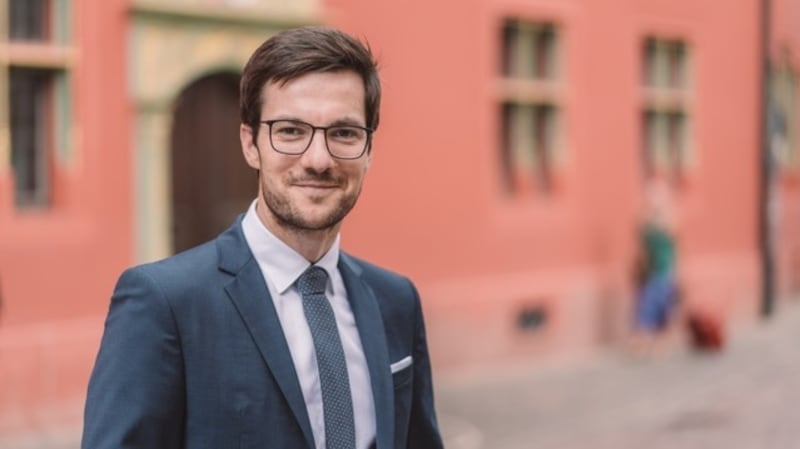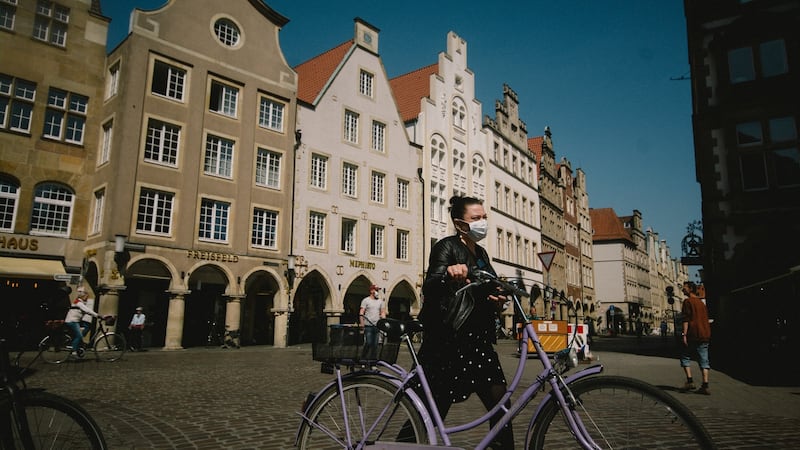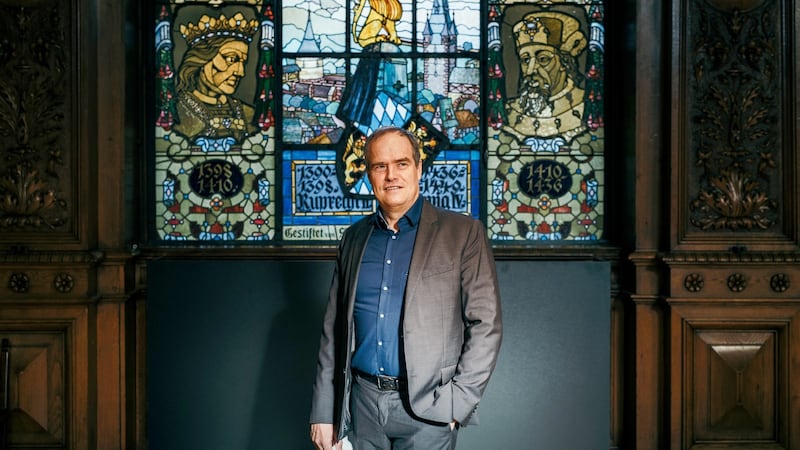From pop-up bike lanes in Berlin to park-bay cafes in Munich, Germany's big cities embraced the Covid-19 pandemic as a chance to test new projects.
But it’s Germany’s mid-sized cities that are leading the way in sustainable planning for the pandemic era and beyond.
The cities in this article have merged three elements of successful urban development: early, far-reaching citizen outreach involvement; a long-term ecological perspective; and an ability to rework Germany’s so-called Tüftler culture – a talent for tinkering with what already works to improve it further.
Freiburg
Perched on the edge of the Black Forest, Freiburg is one of Germany's prettiest cities. It celebrated its 900th anniversary last year, evident in the medieval traces in its old town, yet 10 per cent of the city's 220,000 population are students, making it one of Germany's youngest, greenest and most progressive cities.
Such laurels are not a given, given Freiburg's home state, Baden-Württemberg, is one of Germany's most conservative regions. But the city is still profiting from an unusual alliance, formed in the mid-1970s, when Freiburg's left-wing students joined forces with more socially conservative farmers to oppose a new nuclear plant in the region.
Their protest was successful and, realising there was more that united than divided them, they created a broad political consensus on just how green a city can – and must – be.
Freiburg’s 36 year-old mayor Martin Horn says that not even a once-in-a-century pandemic – and the corresponding tightening of tax income – can halt its progressive politics, given that is what citizens expect from all their public representatives.
“We don’t just have a corona crisis, but also a long-term climate crisis that must take just as seriously,” he said. “The Freiburg municipal council has decided unanimously that, by 2030, we must reduce emissions by 60 per cent – and our city administration must be climate-neutral. We have lots to do until then.”
Freiburg’s eco-push began in earnest in the 1990s with the innovative “Heliotrope” building, feeding power back into the grid. The same decade saw two car-free, sustainable districts built – Vauban and Rieselfeld – that remain an international standard in urban planning.
These districts are a mix of private houses, co-operative projects and social housing – all built to a low-energy building standard of 65 kWh/sq m. The little heat needed is drawn from a local wood-chip factory and, with excellent public transportation links at its heart, locals are three times less likely to own a car than other Freiburgers.
Even so, the vast, city-wide network of cycle lanes, trams and trains mean just one in five journeys in Freiburg is by car.
All new public buildings in Freiburg are energy-neutral. A local tip was turned into a solar farm, and the city football stadium is home to the largest solar panel system of its kind in the world.

Freiburg’s new cylindrical “green” town hall feeds surplus energy back into the grid while a 16-storey 1970s social housing block has been refitted as the world’s first passive energy high-rise.
Aiding the city’s ambitious green journey is a local university and a large number of research institutes, in ecological and solar technology.
But Freiburg’s green, progressive reputation has created new dilemmas: how much of the natural landscape can be sacrificed to tackle a growing housing shortage that has seen rents soar to big-city levels.
In 2019, after a lengthy public consultation process and a hotly-fought public debate and referendum, Freiburgers voted 60:40 in favour of transforming 25 hectares of fields – around 30 football pitches – into a new neighbourhood for 15,000 people.
Locals were swayed by promises to protect biodiversity and offset elsewhere the development’s ecological impact. Like the town hall, Dietenfeld will be a so-called “plus” development, feeding surplus energy from buildings back into the grid.
Mayor Horn’s priority is to maintain Freiburg’s virtuous circle – climate-friendly city planning pushed and pulled by progressive voters. Above all, he says, Freiburg is ready and anxious to share its knowledge with other interested cities.

“It’s important for me that Freiburg remains such a beautiful, liveable city and that our conservation efforts ensure biodiversity remains,” he said.
Münster
Freiburg has plenty of competition for the title of Germany’s most sustainable, green city. What unites these cities – all medium-sized and manageable – is a conviction that the pandemic is a time to step up, not down, on urban transformation projects.
"If we don't push ahead with future planning now, even in a crisis like this, that is time we won't have at the other end," said Robin Denstorff, councillor for city planning in Münster. The pretty city of 300,000 in Westphalia, western Germany, is where a peace treaty was signed in 1648, ending the 30 Years' War that ravaged central Europe.

Like Freiburg, much of Münster was destroyed by wartime bombing. In both cities, locals’ determination to rebuild along historic lines spared them the post-war push, still visible in other cities, for car-friendly planning.
A fifth of Münster’s population are students and the city prides itself as Germany’s bike capital – the preferred transport for up to 40 per cent of journeys – with just seven per cent of residents claiming to have no bike.
While other cities such as Berlin and Munich used last year’s slump in vehicular traffic to create pop-up cycle lanes, Münster planner Robin Denstorff looks askance at what he calls “event-driven planning”. The city has a long-term commitment to the bike: a dedicated cycle lane network of 300km and features that prioritise bikes and pedestrians at all traffic intersections.
Like other university cities, the pandemic has had a major impact on Münster but the city has already begun a process to reassess its third-level buildings and environs for the post-pandemic era.
“For cities like ours, universities are both fountains of youth and major employers,” says Denstorff. “We’ve asked international architectural offices to make proposals to how we can make these spaces more inviting and dynamic spaces.”
In all its major development projects Münster has tried to minimise local resistance with maximum, early consultation, a process that has shifted online during the pandemic.
Heidelberg
High levels of public consultation are the golden rule, too, in Heidelberg. An hour south of Frankfurt and home to a 14th-century university, Heidelberg has used the pandemic to copper-fasten its people-first policy in city planning – with the car at the bottom.
This is revolutionary thinking given how, like Freiburg, Heidelberg is located deep in German car country: the southwestern state of Baden-Württemberg is the historic home of Daimler-Benz.
In last decade since the Greens took power in the state government in Stuttgart, however, a shift has been visible. A major regional project has seen a new network of bicycle highways spring up all over the state. The latest stretch opened in mid-March, offering a new 40km dedicated route out of Stuttgart into the southeast of the state.
As part of its mobility strategy, Heidelberg offers additional sweeteners of €1,000 each to anyone who buys a electric vehicle and installs a charging station. New bridges across the River Neckar allow cyclists to get around without competing with cars for road space.
This fresh thinking is visible, too, in its buildings. A decade ago the city created a new, effectively car-free district, Bahnstadt, on a derelict former freight depot. The self-contained district is home to nearly 6,000 people living in passive houses, with any energy required available from a nearby wood-burning plant.
Lord Mayor Eckart Würzner says Heidelberg is now planning to go one better than Bahnstadt with a new district to be built on 100 hectares – half the size of Monaco.

“The new district – 100 hectares is a big area – will produce more energy than it requires, thanks to even higher insulation and solar energy standards,” says Würzner.
Like the mayors in Münster and Freiburg, Würzner is braced for a lower commercial tax take because of the pandemic. But, talking to other regional leaders around Germany, he sees no let-up in their green ambition.
“My impression is that in local municipalities and city development there is a greater readiness than ever before to move ahead,” he said. “On climate, you have to decide where you want to be, define clear climate goals and work toward that.”










